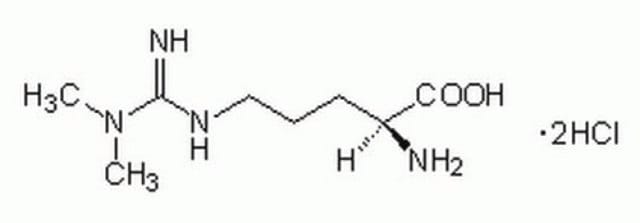494437
Méthanol
≥99.93%, BioReagent
Synonyme(s) :
Alcool méthylique
About This Item
Produits recommandés
product name
Méthanol, BioReagent, ≥99.93%
Densité de vapeur
1.11 (vs air)
Niveau de qualité
Pression de vapeur
410 mmHg ( 50 °C)
97.68 mmHg ( 20 °C)
Description
gradient analysis <= 0.005 254nm
Gamme de produits
BioReagent
Pureté
≥99.93%
Forme
liquid
Température d'inflammation spontanée
725 °F
Limite d'explosivité
36 %
Impuretés
≤0.0002 meq/g Titr. base
≤0.0003 meq/g Titr. acid
≤0.02% (water)
Résidus d'évap.
<0.0003%
Couleur
APHA: <10
Indice de réfraction
n20/D 1.329 (lit.)
Point d'ébullition
64.7 °C (lit.)
Pf
−98 °C (lit.)
Solubilité
benzene: miscible(lit.)
ethanol: miscible(lit.)
water: miscible(lit.)
Densité
0.791 g/mL at 25 °C (lit.)
λ
H2O reference
Absorption UV
λ: 203 nm Amax: 1.0
λ: 210 nm Amax: 0.60
λ: 220 nm Amax: 0.30
λ: 230 nm Amax: 0.15
λ: 240 nm Amax: 0.05
λ: 260-400 nm Amax: 0.01
Format
neat
Chaîne SMILES
CO
InChI
1S/CH4O/c1-2/h2H,1H3
Clé InChI
OKKJLVBELUTLKV-UHFFFAOYSA-N
Vous recherchez des produits similaires ? Visite Guide de comparaison des produits
Description générale
Application
Notes préparatoires
Mention d'avertissement
Danger
Mentions de danger
Conseils de prudence
Classification des risques
Acute Tox. 3 Dermal - Acute Tox. 3 Inhalation - Acute Tox. 3 Oral - Flam. Liq. 2 - STOT SE 1
Organes cibles
Eyes,Central nervous system
Code de la classe de stockage
3 - Flammable liquids
Classe de danger pour l'eau (WGK)
WGK 2
Point d'éclair (°F)
49.5 °F - closed cup
Point d'éclair (°C)
9.7 °C - closed cup
Certificats d'analyse (COA)
Recherchez un Certificats d'analyse (COA) en saisissant le numéro de lot du produit. Les numéros de lot figurent sur l'étiquette du produit après les mots "Lot" ou "Batch".
Déjà en possession de ce produit ?
Retrouvez la documentation relative aux produits que vous avez récemment achetés dans la Bibliothèque de documents.
Les clients ont également consulté
Notre équipe de scientifiques dispose d'une expérience dans tous les secteurs de la recherche, notamment en sciences de la vie, science des matériaux, synthèse chimique, chromatographie, analyse et dans de nombreux autres domaines..
Contacter notre Service technique








